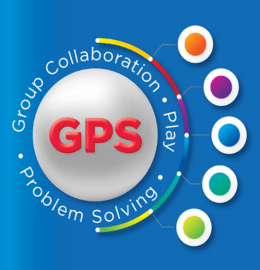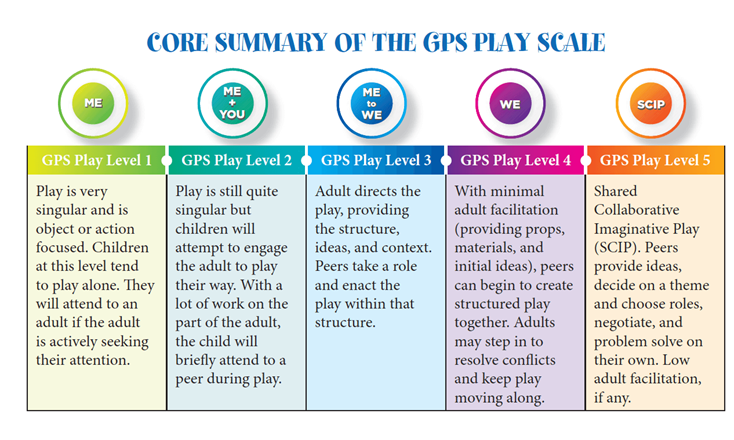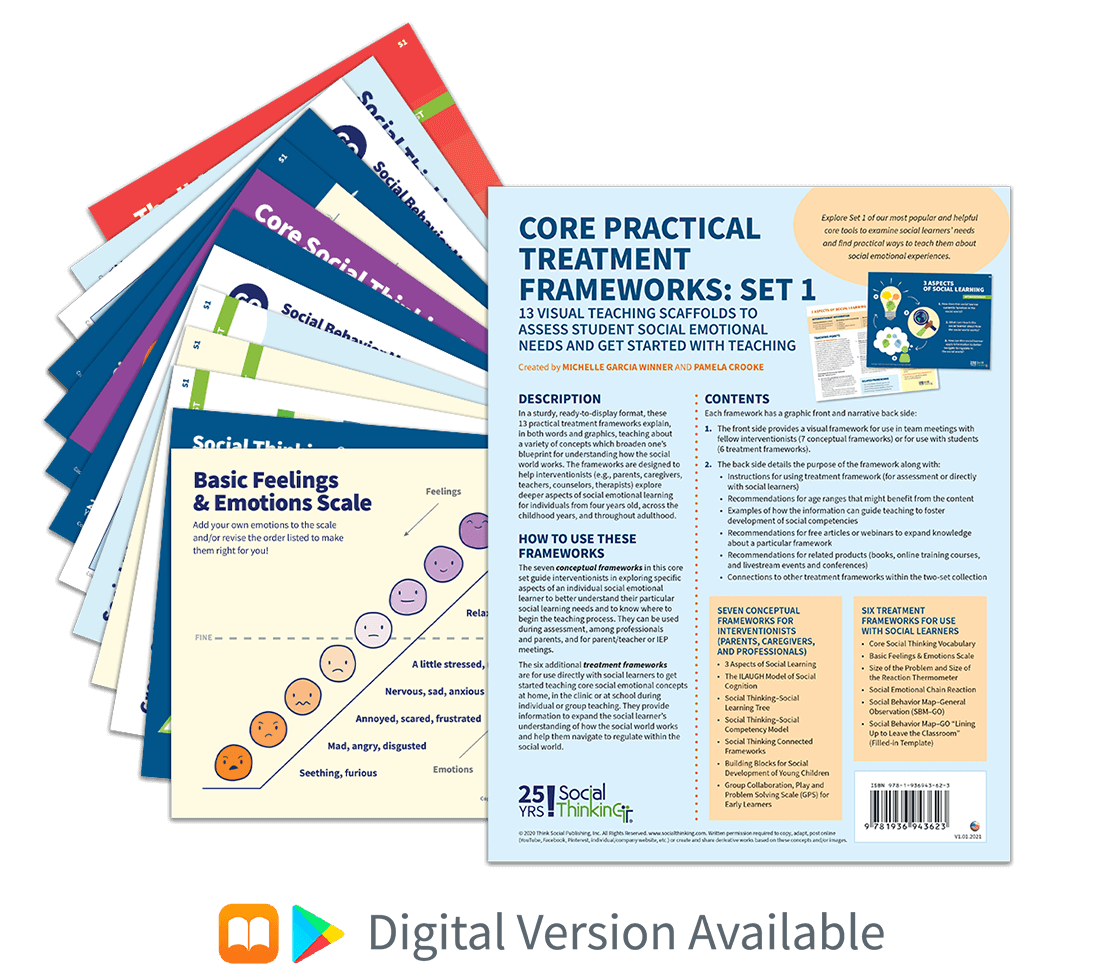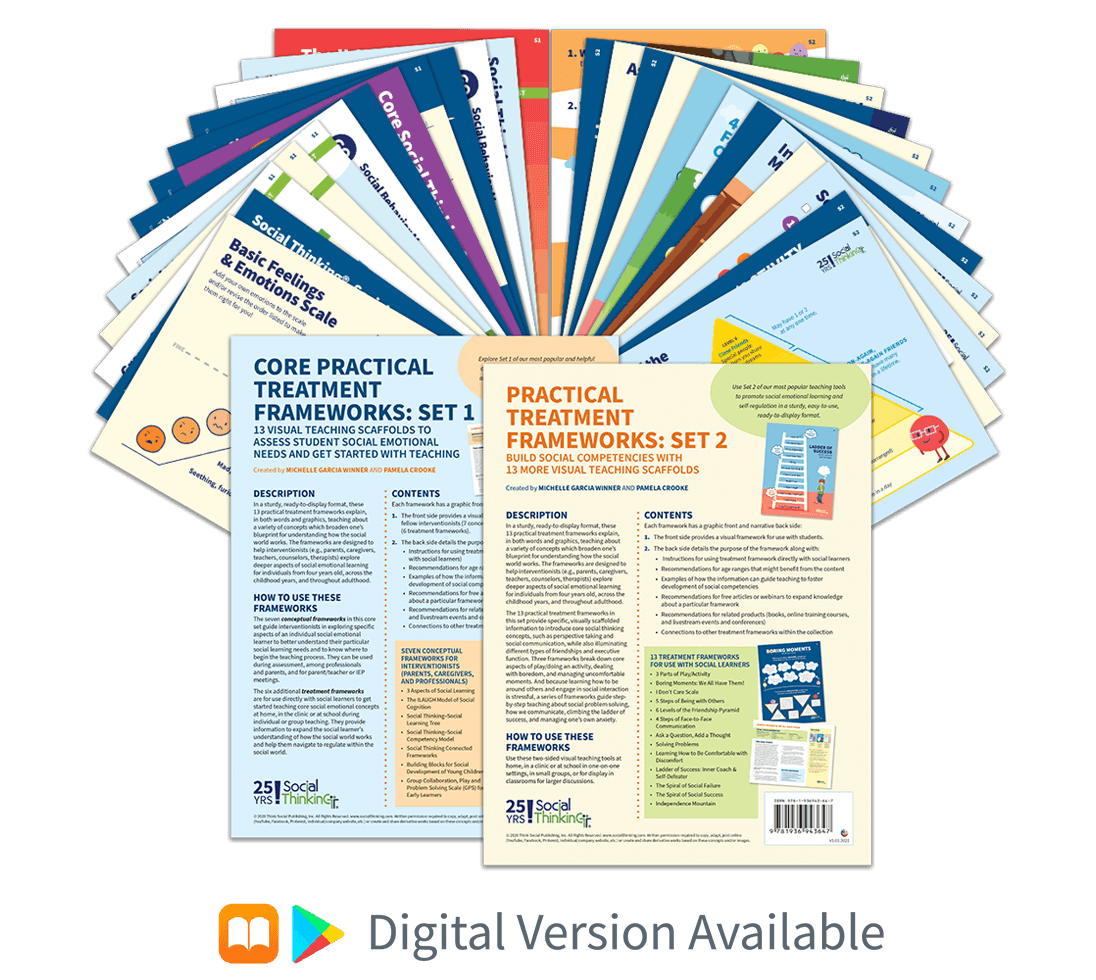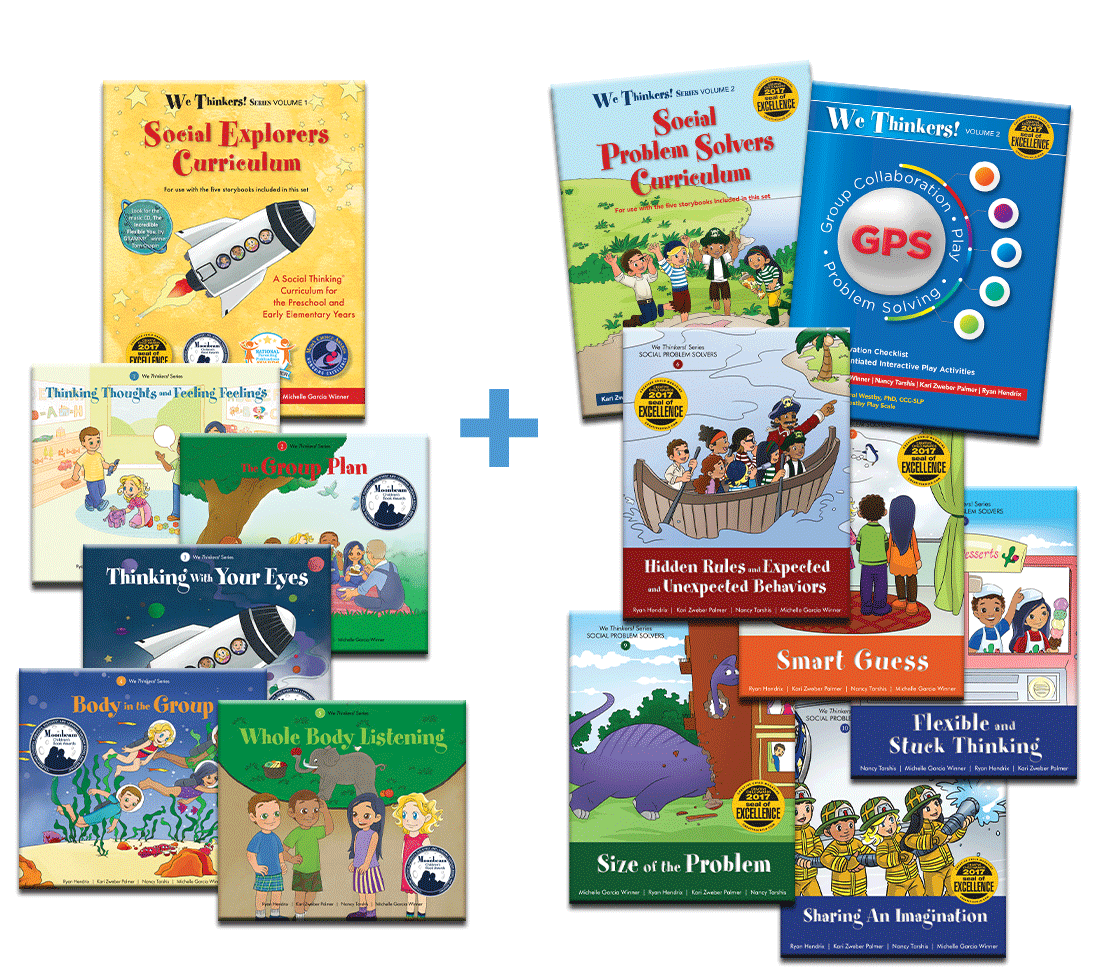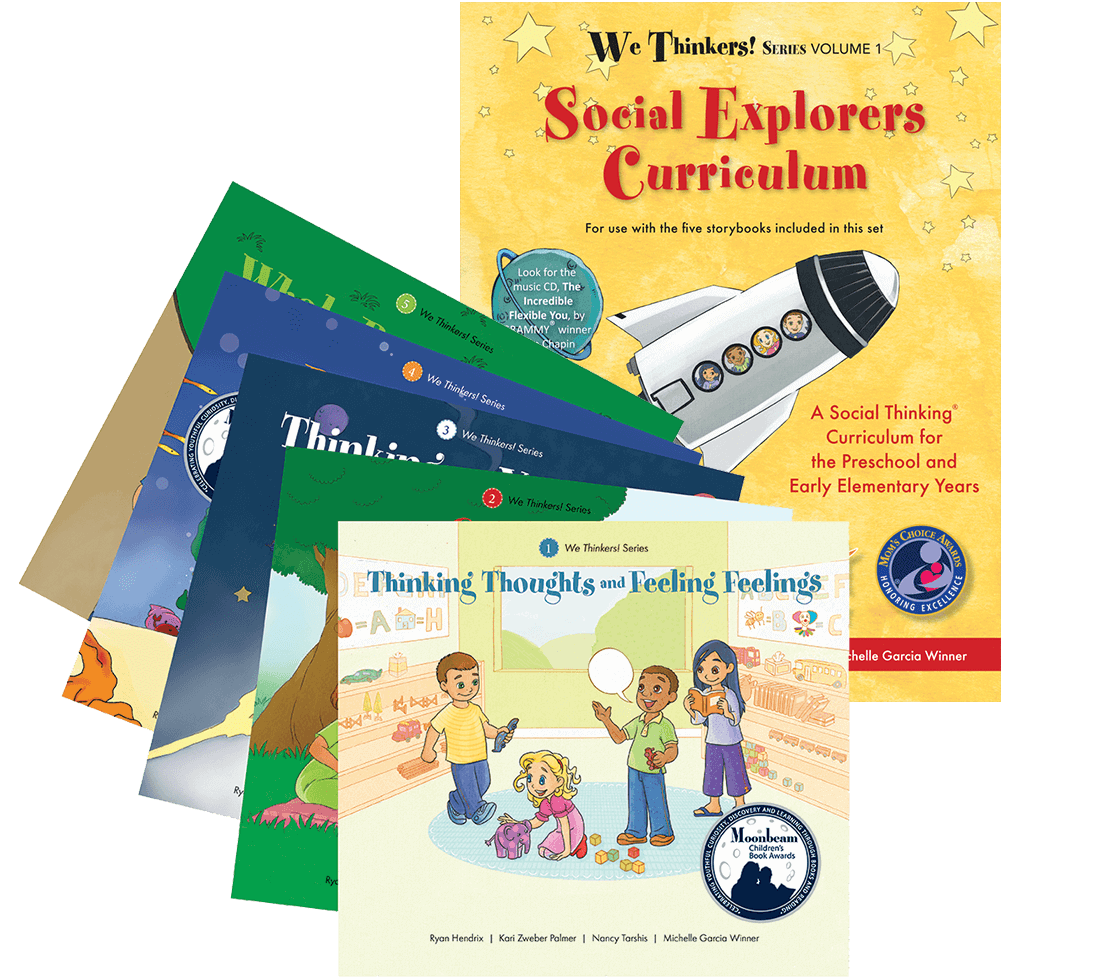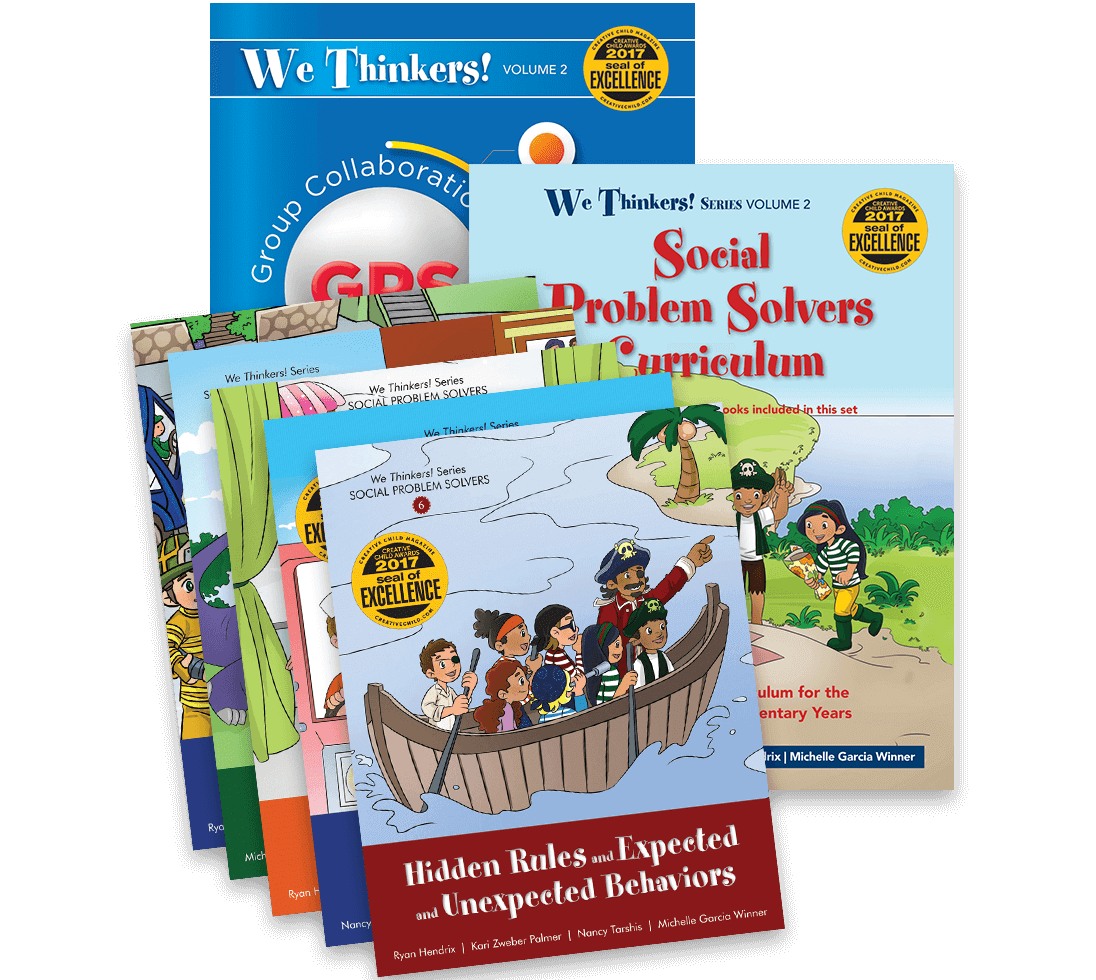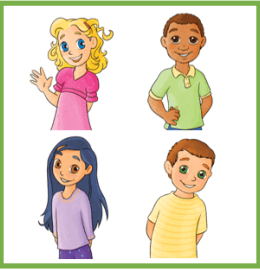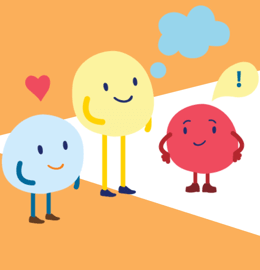Updated: July, 2022
© 2022 Think Social Publishing, Inc.
We’ve been teaching about the role of singular and shared imagination play in social emotional development since first publishing We Thinkers! Volume 1: Social Explorers . In 2016, we introduced our landmark Group Collaboration, Play and Problem Solving Scale (GPS) in We Thinkers! Volume 2: Social Problem Solvers, which explores the concepts of singular and shared imagination, along with other important socially developmental concepts. We Thinkers! GPS: Group Collaboration, Play and Problem Solving is our comprehensive manual, which provides structure for peer-based observations and teaching peer-based interactive play. What follows here is the story of our journey in creating this milestone for helping our early learners lay the foundation for future years of classroom learning and relationship development.
In developing the GPS Scale, we created something entirely new in the world of early childhood learning—a multi-level interactive play scale to take an in-depth look at each child’s interactive play skills to guide individualized planning. We realized this was needed when it became clear that while children were demonstrating progress in social learning, many still struggled to play interactively. We wanted to address how to teach interactive play with lessons that were matched to the child’s interactive play profile. It required plenty of research and many long hours observing children at play in lots of different situations, from structured to totally unstructured free play, to figure out the GPS’s different levels. Next, we created tools to help adults observe and accurately score children’s existing play skills, and then we created differentiated activities for each GPS level.
The Prime Importance of Play to Being Classroom Ready
Why put so much emphasis on interactive play when everyone is focused on academic learning? It is clear from research on early development and social emotional learning that children become classroom ready when they develop peer-based interactive play skills (Coolahan et al., 2000). The keywords here are “peer-based," “interactive,” and “play.” Yet, if you work with or live with younger kids, you already know that not all preschool and young school-age kids play in the same way. Some prefer to play by themselves; others play mainly with adults, while others gravitate toward peer play groups (with varying levels of success in that group). Translation: kids come to the classroom with differing play styles. Those who are more “me-based,” or adult-based players, are not as likely to naturally figure out the dynamics of a playground or a classroom, while those with stronger “we-based” play skills tend to be more fluid in their ability to attend and learn in larger groups.
It all starts with a play scale. The top layer of the GPS Scale is displayed below. It gives you a first look at the GPS’s five levels of interactive play.
Copyright © 2016 Think Social Publishing, Inc. From We Thinkers! GPS (page 26)
It’s fair to say we all take social development for granted. We expect infants to naturally evolve quickly, first to their environment through developing social awareness to their caregivers and motor skills that allow them to move about with increasing independence. Then sensory regulation kicks in and helps them modulate all the different sensory experiences, and social attention emerges to the people around them. This all takes place while they are acquiring social communication skills as they participate in increasingly complex circles of engagement.
As children go from their late 2s to 3s we notice children more actively pursue reciprocal engagement, not only with adults but with their same-age peers. Between ages 4 and 5, children are engaging in what we are calling Shared, Collaborative, Imaginative Play (SCIP), a capacity to engage in abstract, flexible play where they are sharing their imaginations, negotiating roles, and adjusting their play plans based on their own and others’ shared thinking and behaviors. Props may or may not be used; the fun of play seems to be in suspending reality to imagine themselves together as pirates, teachers, parents, store managers, firefighters, etc.
SCIP is complex play, despite how simple it may look to outsiders. It involves reading intentions, understanding shared goals, playing outside of any defined set of rules, being willing to go with the flow based on the desires of the group, and sustaining play over time. As children acquire the ability to relate flexibly and play collaboratively, they are also learning to problem solve and learning classroom readiness skills. At school, we assume children know how to work in a group, read the intentions of a teacher, understand that other children are sharing the same thoughts, and imagine the concepts the teacher is teaching. They need to be flexible, goal-oriented, and purposeful in their actions. This also requires a strong ability to self-regulate their attention, thoughts, and actions to match the plan of the group. It’s a tall order we expect of our early learners!
Not Just Play, But Interactive Play
We created our early learner curriculum for this very reason: to help teach children with strong language skills and some basic academic competencies the crucial and foundational skills that would help them become better social thinkers and use a stronger set of related social skills. We Thinkers! Volume 1 Social Explorers focuses on core Social Thinking Vocabulary concepts to teach social basics: we all have thoughts and feelings, read the group plan, think with your eyes, is your body part of the group?, and listen with your body and brain. We teach these concepts and related social skills using engaging storybooks, music, and play-like activities to help children investigate and better engage in the social world that surrounds them.
The reality is that most play isn’t led by adults, and SCIP certainly isn’t. It’s pure free play where kids come together, figure things out, and play all on their own! In this process, we discovered that virtually all social skills interventions (ours at the time, as well as others), do not address teaching children how to engage in complex interactive multi-player play. Instead, they teach children aspects of social attention, social awareness, and basic social skills, without helping children learn how to put it all together and use these individual skills fluidly, interactively, and collaboratively (what SCIP is all about). Furthermore, none helps adults even figure out if the child’s neurological differences and/or challenges affect how or if they engage in SCIP!
GPS Scale
We created a five-level Group Collaboration, Play, and Problem Solving Scale and identified six key areas to explore in evaluating children’s play abilities. We then designed concrete tools to guide parents and professionals in more closely observing play behaviors to figure out where a child falls on the scale. The hardest thing about creating the GPS Scale was figuring out which core elements to focus on when observing children. We knew we had to keep this list fairly short to make the GPS Observation Checklist easy to use. We settled on these core areas of interactive play:
- Who does the child primarily pay attention to: adults or peers?
- Does the child primarily use novel or scripted language during interactive play?
- Does the child use toys or play props in an abstract or concrete manner?
- Does the child engage in a singular or shared imagination when interacting with others?
- Is the child flexible or rigid during interactive play?
- How does the child discover and/or negotiate the problems that occur in play?
The five different levels of play could then be summarized as children ranging from me-based to we-based players along the continuum defined on our GPS Scale (see diagram earlier in article). The end result, our GPS Play Scale, observation tools, and interactive play activities will hopefully change the way you look at and think about how you teach. We hope this will help you individualize your teaching sessions to match each child’s starting play level and learning.
References
Coolahan, K., Fantuzzo, J., Mendez, J., & McDermott, P. (2000). Preschool peer interactions and readiness to learn: Relationships between classroom peer play and learning behaviors and conduct. Journal of Educational Psychology, 92(3), 458-465.
Winner, M., Tarshis, N., Palmer, K., & Hendrix, R. (2016). We Thinkers! GPS. Santa Clara, CA: Think Social Publishing, Inc.









